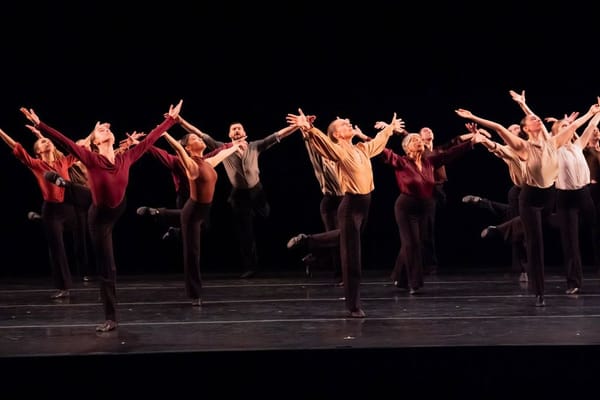Domestic vs. Foreign?

Book: "Todd Bolender, Janet Reed, and the Making of American Ballet"
by Martha Ullman
West University Press of Florida, 2021
388 pages with black/white photos
The noisiest individual about nationality in dance in the America of the 20th Century was Lincoln Kirstein - sponsor, writer, would-be patriot. Never mind that the choreographer he admired the most, George Balanchine, was from Russia by way of Serge Diaghilev's international Ballets Russes. Kirstein advocated against what he considered the "superficial" Americanism of choreographers such as Leonide Massine in ballets like "Union Pacific". In contrast, to represent the beginnings of American ballet, the two individuals our author West has chosen are neither the most likely nor the least likely. Todd Bolender (1914 - 2006) began as a modern dancer. Janet Reed (1916 - 2000) was often classified as a balletic soubrette. Bolender and Reed did not even meet until the fall of 1939. Mrs. West might instead have picked the dramatic Nora Kaye or one of the explorative Littlefield sisters and a Christensen brother or Eugene Loring to represent America ballet. But she is unwavering that Bolender and Reed serve history best. These two met again in the 1940s, and became occasional dance partners but lifelong friends. Bolender was a prolific choreographer in the USA, Germany and Turkey. Reed was a prominent dancer with such major companies as (American) Ballet Theatre and New York City Ballet. The book by Mrs. West details the course of their careers and the growth of American ballet.
One of Bolender's most popular works was "The Miraculous Mandarin" to Bela Bartok's music. The Bolender version of this ballet premiered at NYC Ballet in 1951. Kirstein had recommended the music to Bolender, even though it turned out that Balanchine loathed the score and Bartok's music in general. I'm not surprised. I can not even imagine Balanchine choreography to anything by Bartok. What was composed by Bartok is too plump for Balanchine movement. Nor does the ballet's expressionist plot, after a story by Melchior Lengyel, seem like something that would interest Balanchine. Bolender's version did not last long at NYC Ballet but he restaged it in Germany and Turkey. It is for such facts and explanations that Mrs. West's book is intriguing to read. She does not mention everyone in the 20th Century growth of ballet in America. Among the overlooked are New Orleans teacher Lelia Haller, Central Pennsylvania teacher Marcia Dale Weary, Chicago choreographer Ruth Page, D.C. teachers Lisa Gardiner and Mary Day, Baltimore teacher and choreographer Paul Gardner, D.C. choreographer Choo San Goh et alia. No, Bolender and Reed were not the sole American ballet pioneers.
copyright ©2021 by George Jackson



